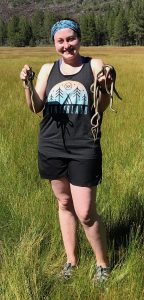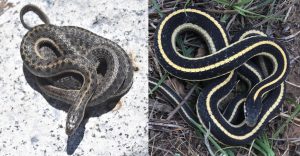**The AGA grants EECG Research Awards each year to graduate and post-doctoral researchers who are at a critical point in their research, where additional funds would allow them to conclude their research project and prepare it for publication. EECG awardees also get the opportunity to hone their science communication and write three posts over their grant tenure for the AGA Blog. In the first in the series, our EECG awardees write about their research and their interests as an ’embarkation’.

About the Author: Dr. Jessica Judson recently received her PhD in Ecology and Evolutionary Biology at Iowa State University. She received her BS and MS in Biological Sciences from Mississippi State University. She is broadly interested in population genetics, including understanding the interactions of population dynamics and selection in natural populations of ectothermic vertebrates and their effects on genomic architecture. Follow Jessica on Twitter @jjudson28
Why do some organisms age faster than others? And why do some populations of the same species vary in aging patterns? The evolutionary origins and adaptive significance of life-history variation among species have been long-standing questions in ecology and evolutionary biology. Even within a species, remarkable variation can exist in life-history traits among populations (e.g., Thamnophis elegans; ). Decades of research have used classic quantitative genetic approaches, such as common gardens and reciprocal transplants, to partition such variation between genetic and environmental causes. With expanding genomic resources, we can now understand genomic differentiation underlying life-history evolution in wild populations and identify the evolutionary drivers of this life-history variation across geographic space.

Populations of western terrestrial garter snakes that inhabit the lakeshore and meadow habitats surrounding Eagle Lake in California, USA exhibit one of two divergent life-history strategies: fast-paced (early maturation and early death; Fast) and slow-paced (Slow; Figure 1). These strategies are also found in very distinct habitats, which impose different selective pressures on these fast- and slow-paced life histories (Figure 2). “Fast” populations live along the lakeshore, with consistent access to water and prey but increased predation pressure, which should select for fast growth and maturation in these snakes. “Slow” populations live in higher elevation meadows, with lower predation pressure but variable water and food availability, which suggests that slower growth and lower metabolic requirements would be advantageous in this fluctuating environment. Dr. Anne Bronikowski and I performed whole-genome resequencing on multiple populations of each life-history strategy to assess both population genetic structure across the region and genomic signatures of selection between Fast and Slow populations.

Populations were differentiated by life-history strategy, but divergence was low on average across the genome (FST ~ 0.02). Further, there were many individuals of admixed ancestry between the two strategies, particularly at the mouth of creeks flowing through meadow habitats and into Eagle Lake. Despite this abundant gene flow, many regions of the genome were strongly differentiated between the two life-history strategies, and these regions are associated with multiple inversions identified across the genome in Fast populations. Even more compelling, these inversions contain genes that support the measured differences in physiology, aging, and color between life-history strategies. Inversions can reduce recombination among favorable allelic combinations in the face of gene flow, and may thus be the mechanism by which life-history divergence can be maintained in this metapopulation of garter snakes.
The next step of this exciting project is to connect genotypes of inversions with phenotypes, particularly in individuals that show mixed ancestry between Fast and Slow. Thus, we will genotype additional snakes in these populations and measure specific phenotypes that are likely under strong selection, like coloration and metabolism, in the field to understand the relationships of inversion genotypes and fitness. I am looking forward to getting back out to the beautiful Sierras to catch snakes this summer and understanding how the interactions of strong selection and gene flow can lead to the evolution of lifespan!
References



